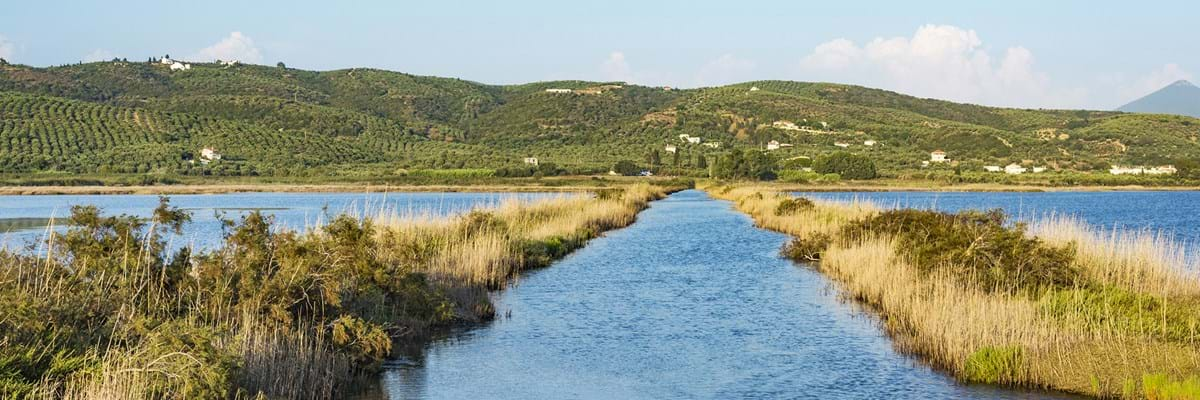Holidaymakers are not the only visitors flocking to the shores of Greece every year. More than 200 species of birds can be spotted, especially during the spring migrations, at the Gialova Lagoon, a protected wetland near Messinia, in the south Peloponnese.
Elegant flamingos are joined by egrets, terns, cormorants and thousands of other waders and sea birds, attracted by the brackish waters which are less than five feet at their seasonal deepest.
The lagoon, one of seven European Union Natura 2000 sites in the area, is bordered by sandy dunes, and the nearby cliffs and forests provide a habitat for many more bird species, including woodpeckers, as well as jackals, while the surrounding seas are home to otters, loggerhead turtles and bottlenose dolphins.
Rarest of all animals in the area are African chameleons, possibly descendants of specimens brought from Egypt by the Romans, and found nowhere else in Europe.
While visitors are obviously asked to cause minimum disturbance, and swimming is discouraged, the lagoon can be viewed by walking from the car park of adjoining Voidokilia Beach, where the golden sands and crystal-clear waters offer their own welcome to human tourists.
Voidokilia, however, has few facilities, so it is best to take your own supplies for the day – and obviously take everything away again, to avoid spoiling the natural environment.
Nearby Gialova and Divari beaches are well organised and popular with both families and watersports enthusiasts, with plenty of restaurants and cafes and lovely views of Pilos castle.
See other recommended walks in Greece and Cyprus.



